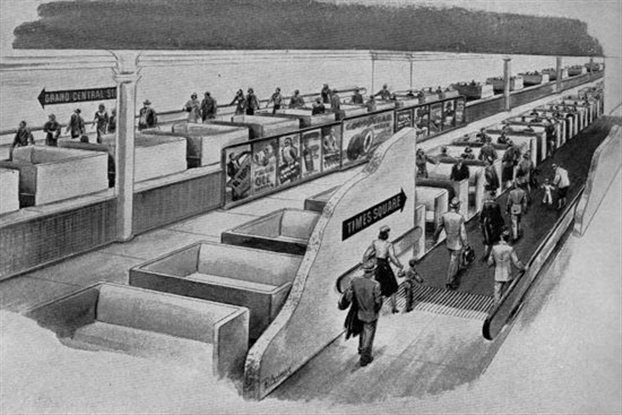Researchers at the PostCarWorld (EPFL), a team at the Lausanne Polytechnic have been exploring futuristic solutions to transport in urban areas. Their newest design is an accelerated network of optimal moving sidewalks. This is not a new idea. The first moving walkways were seen in Chicago in 1893, and seven years later they were used at the world’s fair in Paris. Since then, the idea periodically resurfaces in sci-fi books, but also in the minds of transportation engineers and urban planners in search of eco-friendly transport solutions. In a breakthrough study, EPFL researchers have analyzed the feasibility of fast moving walkways in an urban setting. Their results are encouraging. “15 km/h is around the average speed at which people travel through most large cities during rush hour,” said Riccardo Scarinci, the lead author of the article that will be published in the European Journal of Transport and Infrastructure Research. The researchers used real data from Geneva in developing their mathematical model. They explored various configurations of the following factors: speed, acceleration, length and width, not to mention intersections and entry and exit points. They optimized their network by closely analyzing people’s daily travels in Geneva – from start to end – along primary, secondary and tertiary roads. The ideal network they developed begins with a small ring around a car-free urban center and extends out along primary roads on 47 different links equipped with 10 gates for a total length of 32 kilometers. There are 37 intersections where expressways would be set up using bridges or underpasses.
Sci-fi moving sidewalks to make commuting faster!
New study in Geneva encouraging
































